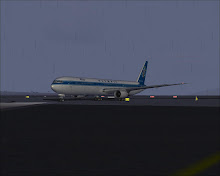Was more commonly known as the Lockheed 14 and it was a civil passenger and cargo aircraft.
Developed by the original model of Electra10 increasing the passenger seating from 10 to 14.
The first Model14 flew on 1937 and entered in commercial service with Northwest Airlines.
General characteristics
Crew: two, pilot and co-pilot
 Capacity: 12 passengers
Capacity: 12 passengersLength: 44 ft 4 in (13.52 m)
Wingspan: 65 ft 6 in (19.97 m)
Height: 11 ft 5 in (3.48 m)
Wing area: 551 ft² (51.2 m²)Empty weight: 10,750 lb (4,886 kg)
Loaded weight: 15,650 lb (7,114 kg)
Max takeoff weight: 17,500 lb (7,955 kg)
Powerplant: 2 × Wright SGR-1820-F62 radial engines, 760 hp (567 kW) each
Performance
Maximum speed: 250 mph (402 km/h)
Range: 2,125 mi (3,420 km)
Service ceiling: 24,500 ft (7,649 m)
Wing loading: 28 lb/ft² (139 kg/m²)
Power/mass: 0.10 hp/lb (0.16 kW/kg)
















